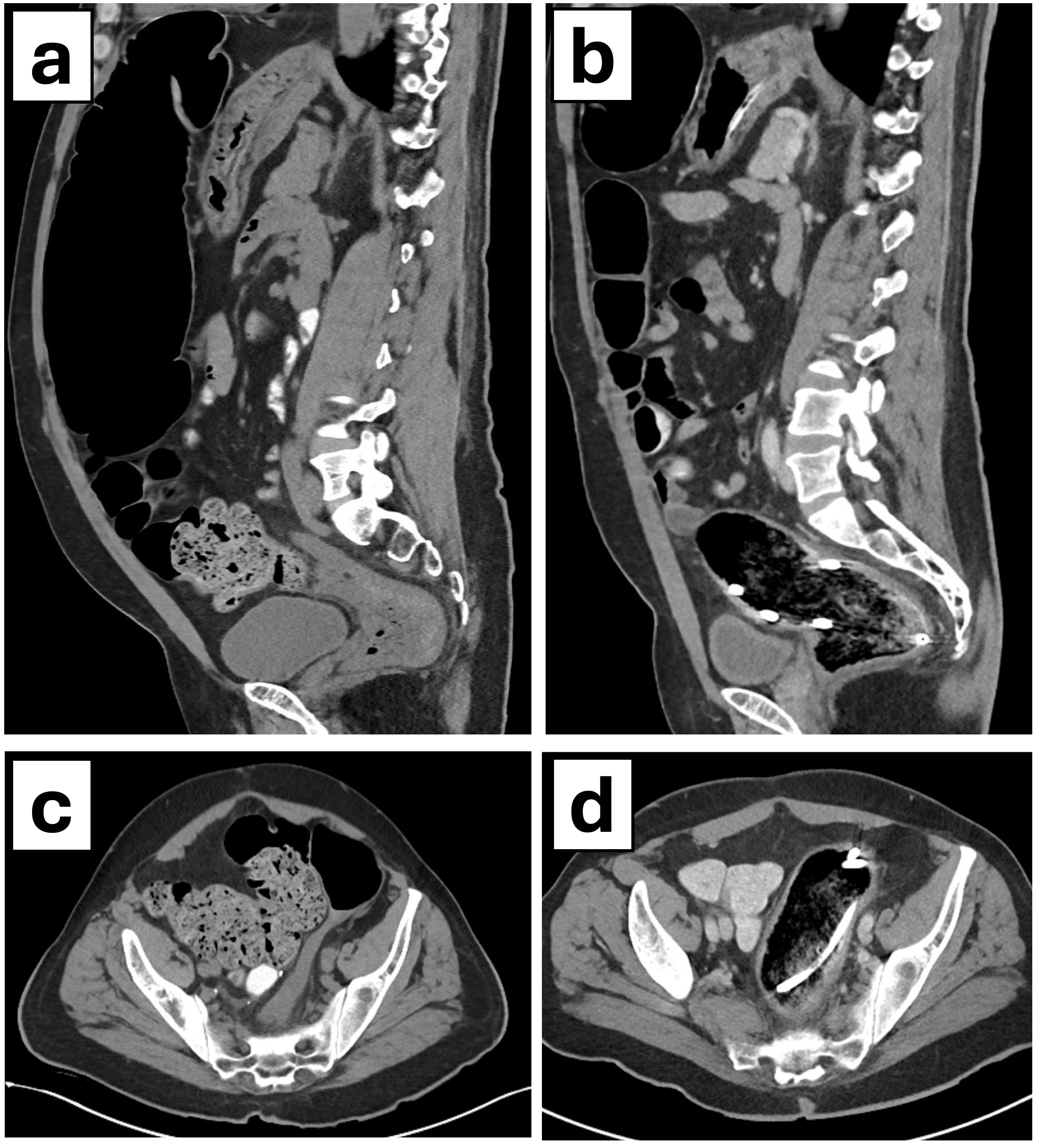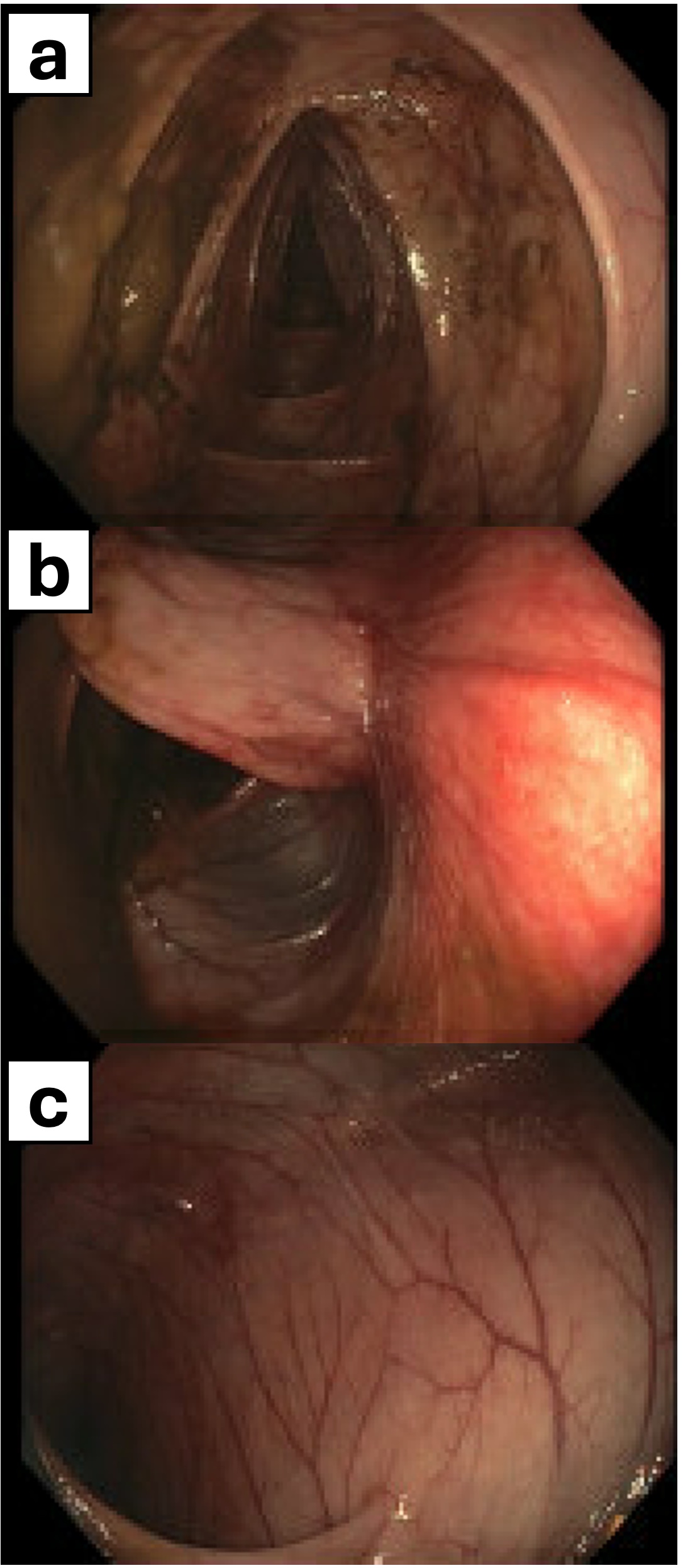Tuesday Poster Session
Category: Colon
P4695 - A Heavy Burden: Extrinsic Fecal Compression Causing Severe Large Bowel Obstruction
- ES
Elizabeth Statham, MD (she/her/hers)
University of Alabama at Birmingham Hospital
Mountain Brook, AL
Presenting Author(s)
1University of Alabama at Birmingham Hospital, Mountain Brook, AL; 2University of Alabama at Birmingham Heersink School of Medicine, Birmingham, AL; 3University of Alabama at Birmingham Hospital, Birmingham, AL; 4University of Alabama at Birmingham, Birmingham, AL; 5UAB Montgomery, Montgomery, AL
Introduction:
Large bowel obstructions (LBOs) account for 20 to 25% of all bowel obstructions and often require urgent surgical intervention. Prompt identification and management of LBO is imperative, particularly as cecal diameter increases to prevent significant morbidity and mortality. LBOs can arise from a multitude of etiologies, most commonly from intrinsic causes such as malignancy or strictures. Extrinsic compression due to fecal impaction represents a rare and atypical etiology of LBO.
Case Description/
Methods:
A 55-year-old male with an extensive past surgical history including sigmoid colon resection, ostomy reversal, and ventral hernia repair with mesh was transferred for evaluation of progressive abdominal pain, distension, and nausea. Computed Tomography (CT) imaging showed severe colonic dilatation (Figure 1a, c), most pronounced in the distal transverse colon and descending colon, with the largest segment measuring up to 15.3 cm x 9.6 cm. A transition point was identified distal to patent sigmoidoscopy anastomosis with decompression adjacent to the fecalized cecum and a moderate fecal burden, indicating LBO. CT and endoscopic evaluation (Figure 2) revealed a patent anastomosis, effectively excluding stricture-related obstruction as the cause for LBO. The etiology for LBO was ultimately determined to be due to extrinsic compression from stool burden. Upon endoscopic decompression, the patient experienced symptomatic resolution and reduction in colonic distension confirmed via imaging (Figure 1b, d) without redemonstration of a transition point.
Discussion:
Cases of LBO with cecal diameter exceeding 12 cm incur significantly greater risks, including bowel ischemia, necrosis, and perforation. Although constipation is a common complaint, LBO caused by extrinsic fecal compression-- without mass, stricture, or volvulus-- is exceptionally rare, especially to this degree. This case highlights an unusual presentation LBO in the context of a patent anastomosis, where extrinsic fecal compression resulted in profound colonic dilatation that was successfully managed with endoscopic depression, avoiding surgical intervention. This case underscores the importance of including rare extrinsic causes of LBO in the differential, particularly when imaging reveals colonic dilatation with a patent anastomosis.
Figure: Figure 1: Sagittal and axial views prior to and after endoscopic decompression
Figure: Figure 2: Endoscopic decompression images with dilated transverse colon
Disclosures:
Elizabeth Statham indicated no relevant financial relationships.
John Cooper indicated no relevant financial relationships.
Muhammad Farooq indicated no relevant financial relationships.
Dalton Norwood indicated no relevant financial relationships.
Shajan Peter: Castle biosciences – Advisory Committee/Board Member. Olympus corporation – Advisory Committee/Board Member.
Jayasree Rajapandian indicated no relevant financial relationships.
Elizabeth Statham, MD1, John Cooper, MD2, Muhammad Farooq, MD3, Dalton A. Norwood, MD4, Shajan Peter, MD4, Jayasree Rajapandian, MD5. P4695 - A Heavy Burden: Extrinsic Fecal Compression Causing Severe Large Bowel Obstruction, ACG 2025 Annual Scientific Meeting Abstracts. Phoenix, AZ: American College of Gastroenterology.
